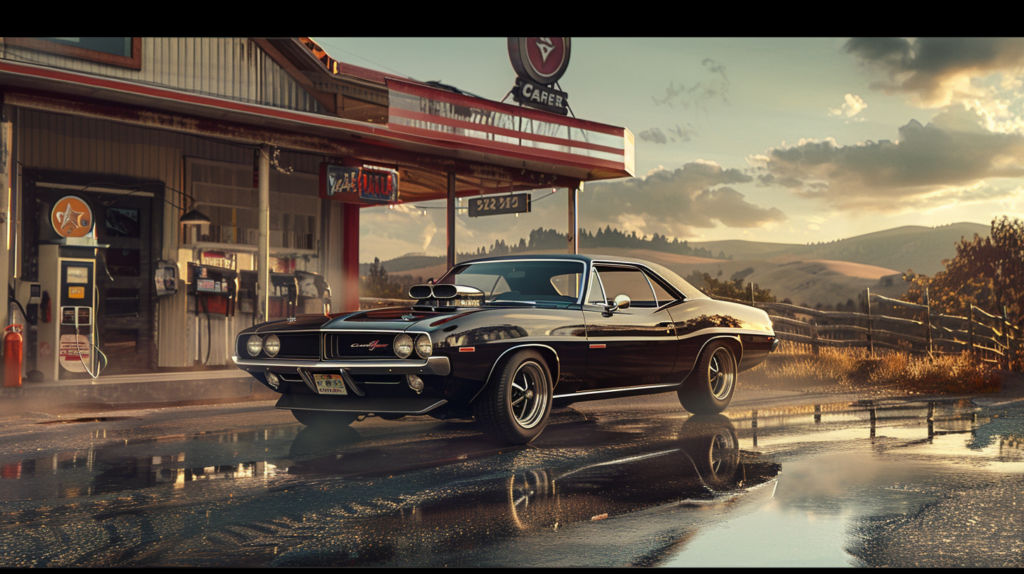
When you think of muscle cars, images of roaring engines, sleek designs, and adrenaline-filled drives may come to mind. But have you ever considered the impact these powerhouse vehicles have had on the automotive industry as a whole? From their humble beginnings to the modern-day engineering marvels they’ve become, muscle cars have a story that goes beyond the race track. So, what secrets lie beneath the hood of these iconic machines?
Origins of Muscle Cars
Exploring the origins of muscle cars reveals a rich history intertwined with American automotive culture. In the mid-20th century, car manufacturers began injecting powerful V8 engines into their mid-sized vehicles, creating the foundation for what would become known as muscle cars.
It was a response to the demand for high-performance vehicles that could cater to both speed enthusiasts and everyday drivers. The 1964 Pontiac GTO is often credited as the first muscle car, setting the stage for other iconic models like the Ford Mustang and Chevrolet Camaro.
These cars embodied a unique blend of style, power, and affordability, capturing the hearts of many and sparking a cultural phenomenon that still resonates today.
Evolution of Muscle Car Designs
The evolution of muscle car designs showcases a remarkable progression in both aesthetics and performance over the decades. From the bold and aggressive look of early models to the sleek and modern designs of today, muscle cars have continually adapted to reflect changing tastes and technological advancements.
Manufacturers have incorporated aerodynamic features, improved safety standards, and innovative materials to enhance both the visual appeal and overall performance of muscle cars. The evolution is evident in the attention to detail in body contours, the use of lightweight materials for improved speed, and the integration of advanced technology for better handling.
Each new generation of muscle cars builds upon the successes of the past, creating a legacy of iconic designs that continue to captivate enthusiasts worldwide.
Performance and Speed of Muscle Cars
As muscle car designs have evolved, so too has the performance and speed they offer. Modern muscle cars are built to deliver impressive acceleration and top speeds, catering to enthusiasts who crave thrilling driving experiences. With advanced engineering and cutting-edge technology, these vehicles can achieve 0-60 mph times in the range of 3 to 4 seconds, putting them in the league of high-performance sports cars.
The top speeds of muscle cars can vary depending on the model and modifications, but many can easily surpass 150 mph. Whether you’re tearing down the straightaways of a track or cruising on the open road, today’s muscle cars are designed to provide adrenaline-pumping speed and performance that will leave you exhilarated.
Iconic Muscle Car Models
When delving into the realm of muscle cars, one can’t overlook the legendary models that have left an indelible mark on automotive history. Models like the Ford Mustang, Chevrolet Camaro, and Dodge Challenger stand out as iconic representations of the muscle car era.
The Ford Mustang, introduced in 1964, revolutionized the market with its sporty design and powerful performance. The Chevrolet Camaro, a fierce competitor, has a rich history of speed and style, capturing the hearts of muscle car enthusiasts. The Dodge Challenger, known for its raw power and classic aesthetics, continues to inspire modern muscle car designs.
These iconic models haven’t only defined an era but have also continued to influence the automotive industry with their enduring legacies.
Enduring Popularity of Muscle Cars
Exploring the enduring popularity of muscle cars reveals a timeless allure that transcends generations. These powerful vehicles continue to capture hearts with their iconic designs, roaring engines, and exhilarating performance. Enthusiasts are drawn to the unique blend of nostalgia and modernity that muscle cars embody, creating a lasting appeal that withstands the test of time.
The cultural significance of muscle cars, symbolizing freedom, power, and individuality, contributes to their enduring popularity. Whether it’s the classic models from the golden era of muscle cars or the latest releases with cutting-edge technology, the passion for these high-performance machines remains unwavering.
The thrill of driving a muscle car, the sense of connection to automotive history, and the community of enthusiasts all play a part in keeping the legacy alive.
Frequently Asked Questions
Are Muscle Cars Fuel-Efficient Vehicles?
No, muscle cars aren’t fuel-efficient vehicles. They’re designed for high performance and speed, prioritizing power over fuel economy.
If you’re looking for a fuel-efficient option, consider a different type of vehicle.
How Do Modern Safety Features Compare in Muscle Cars?
When considering modern safety features in vehicles, you’ll find advancements like:
- Adaptive cruise control
- Lane departure warning systems
- Automatic emergency braking
These technologies enhance driver and passenger safety by helping to prevent accidents.
What Are the Maintenance Costs for Muscle Cars?
When it comes to maintenance costs, you’ll find that regular upkeep is crucial to keep your vehicle running smoothly.
From oil changes to tune-ups, staying on top of maintenance can help prevent costly repairs.
Can Muscle Cars Be Used for Everyday Driving?
Yes, muscle cars can be used for everyday driving. They provide power and style, making your daily commute more exciting.
However, keep in mind that they may have higher fuel costs and require more maintenance.
Are There Any Environmentally Friendly Muscle Car Options Available?
Yes, there are environmentally friendly options available in the automotive market.
Many car manufacturers are now offering electric or hybrid vehicles that produce lower emissions and have a reduced impact on the environment.
Conclusion
You’ve learned about the rich history, evolution, performance, and enduring popularity of muscle cars.
These iconic vehicles have captivated generations with their powerful engines, stylish designs, and exhilarating speed.
Whether you’re a long-time enthusiast or a newcomer to the world of muscle cars, their timeless appeal and unique combination of power and style will continue to leave a lasting impression on automotive culture for years to come.
